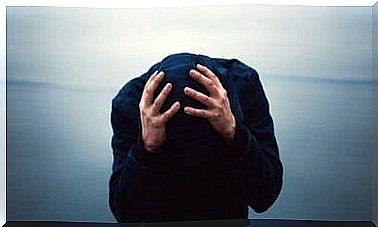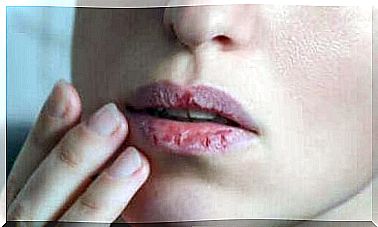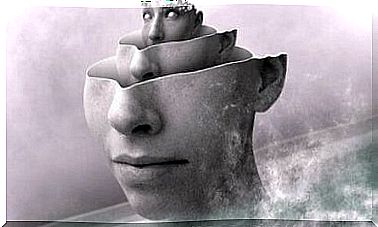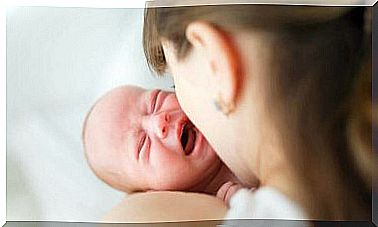How To Take Care Of The Navel Of A Newborn Baby
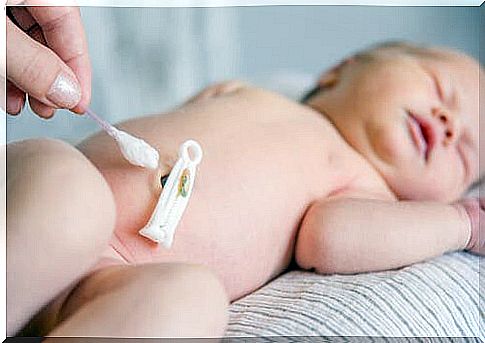
How to take care of the navel of a newborn baby is a common cause for concern, especially among first-time parents. However, you do not have to worry. All you need to do is take advantage of some basic care so that the remaining part of the umbilical cord comes loose and heals without any problems.
When a baby is still in the womb, it gets all the nutrition it needs through the umbilical cord. When the baby is born, the doctor cuts the umbilical cord since it no longer has any purpose. A small part of the string remains attached to the baby’s body. This part dries slowly until it falls off , leaving the scar we know as the navel.
Caring for the navel of a newborn baby involves preventing any kind of infection. All you need to do is practice proper hygiene measures as well as take simple preventative measures to prevent this from happening. With the right measures, it loosens naturally on its own in just two to three weeks.
The navel of a newborn baby
When the baby is born, a doctor or nurse will cut the umbilical cord about 4 inches from the baby’s abdomen. They do this with the help of artery forceps, whose function is to control the bleeding. They hold the rest of the string with special plastic clips.
Then the umbilical cord of the newborn begins a process in which it breaks down. As the days go by, the string will dry out, shrink and get a brownish color before it finally falls off. All this takes on average between 8 and 10 days. In babies born by caesarean section, this process can take a few extra days.
When the stump falls off, it leaves a wound that needs between three and five days to heal. During this time, parents must take special care to continue the prevention of infection or other complications. When the wound has finally healed, you no longer have to worry.
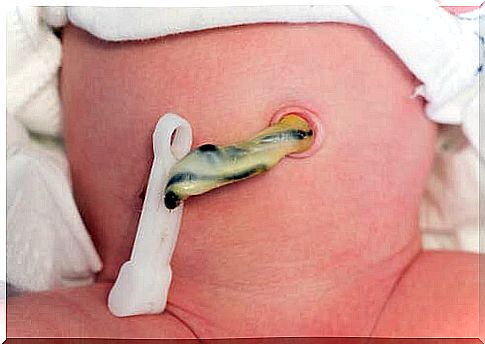
Taking care of the navel of a newborn baby
Caring for the navel of a newborn baby ends when the area is healed properly. There are many myths and half-truths regarding this process. Previously, experts recommended cleaning the area with 70% alcohol, either alone or in conjunction with an antiseptic, such as chlorhexidine.
However, various studies have shown that this can delay the release of the umbilical cord. It is therefore only necessary when babies live in areas with poor hygiene. Otherwise, the only golden rule is that parents keep the navel clean and dry.
This involves several basic actions:
- Parents and caregivers should wash their hands before bathing a newborn baby or changing a diaper.
- Do not remove or pull on the umbilical cord. It will fall off when it is ready for it.
- You can bathe your baby without worrying. However, you must be sure to dry the area carefully and thoroughly after the bath time.
- If the area around the navel becomes dirty with urine or feces, wash it with a cloth and lukewarm water.
- The area around the navel of a newborn baby should be uncovered. This means that clothes and diapers should not cover the area.
This is how you can clean the navel of a newborn baby
Experts recommend that parents clean the navel of the newborn until it heals completely. This procedure is simple and should take place after bathing the baby.
Follow the steps below:
- After the baby has bathed, gently wipe the whole body.
- Wash your hands thoroughly with soap and water.
- Moisten a sterile gauze bandage with a mixture of warm water and neutral soap, or with alcohol if the environment is not hygienic.
- Clean the entire surface of the navel and the surrounding area.
- Use a clean gauze to dry the area well.
- Do not use cotton or iodine-based products.

You should take care of this
If the wound has not yet healed after 20 days , it may be due to an infection called relapse. In these cases, the area usually becomes red and hard. At the same time there will be liquids or bloody and smelly secretions.
When the umbilical cord falls off, it is normal for there to be mild bleeding. However, if the bleeding is extensive or does not stop, you should apply pressure to the area with a sterile gauze bandage and talk to a doctor.
Occasionally, a red spot may appear in the scar on the navel, known as the umbilical granuloma . This is not serious, but you should visit your pediatrician.
Sometimes a bulge may appear on the navel, which is an indication of a hernia. This is not something serious and tends to disappear around the age of 2 or 3. At the same time, there may be a small protrusion in the form of an elephant’s beak, often known as an outer navel.
Regardless, the pediatrician will tell you what steps you should take to ensure that your baby is healthy and happy.
